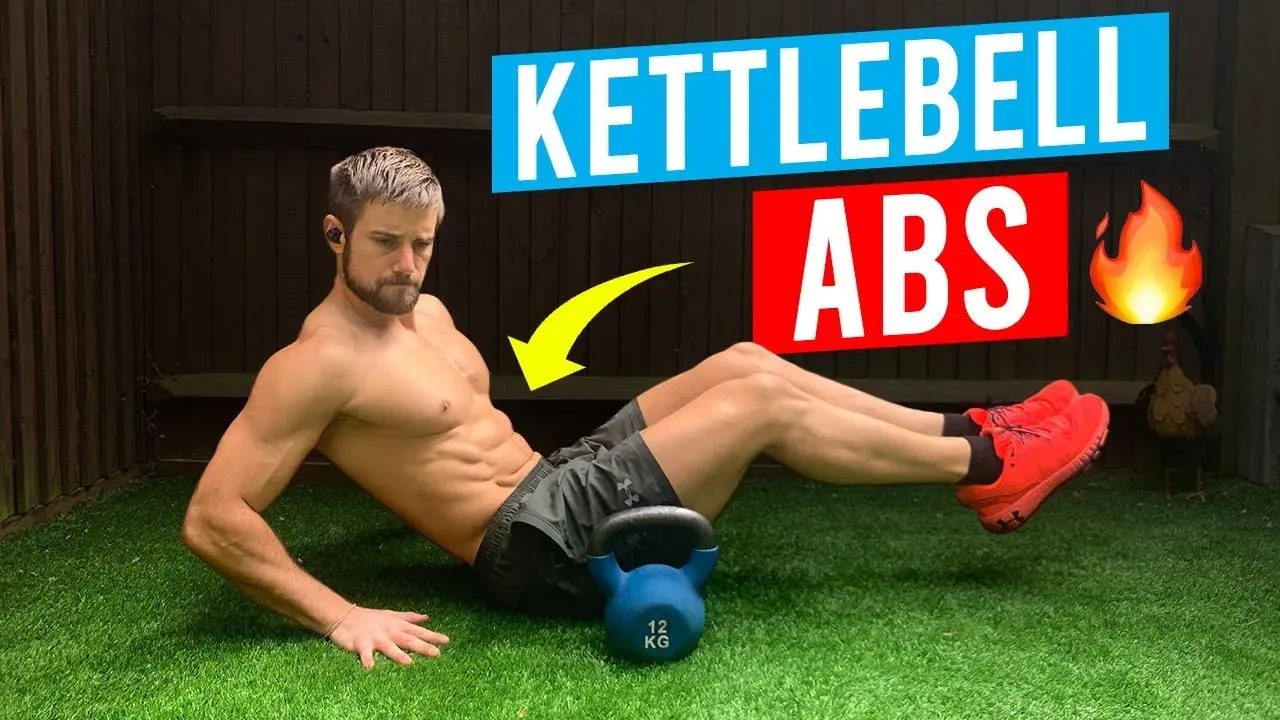Table of Contents
Let's be honest, endless crunches get boring fast. And if you're still chasing that elusive six-pack with just floor work, you might be missing out. Your core is more than just the front part; it’s your body’s powerhouse, stabilizing everything you do, from lifting groceries to crushing a heavy squat. That's where dynamic tools come in. Specifically, we're talking about how effective kettlebell ab workouts can be.
Why Kettlebell Ab Workouts Hit Different

Why Kettlebell Ab Workouts Hit Different
The Unstable Advantage
You've likely spent time on the floor, grinding out crunches or holding planks until you shake. Those have their place, sure, but they often miss a crucial element: instability. A kettlebell isn't a perfectly balanced barbell or a machine guiding your movement. The weight hangs below the handle, creating an offset load. This simple difference forces your core, particularly the deep stabilizing muscles you barely knew you had, to work overtime just to keep you upright and controlled.
Think about it during a swing or a clean. As the bell arcs through space, your body has to constantly adjust, resist rotation, and absorb force. This isn't just about flexing your rectus abdominis (the six-pack muscle); it's about your entire trunk – obliques, transverse abdominis, spinal erectors – firing together like a well-oiled machine. This is why standard kettlebell exercises, even those not explicitly labeled "ab moves," are secretly crushing your core.
Building a Bulletproof Midsection
Core strength isn't just for show; it's about function. Can your abs handle resisting torque when you twist? Can they stabilize your spine when you lift something heavy off the ground? Kettlebell movements like Turkish Get-Ups, snatches, and even carries demand this kind of integrated strength. They teach your core to act as a brace, transferring power efficiently between your lower and upper body.
This functional strength translates directly to everyday life and other sports. Picking up a squirming kid, swinging a golf club, or just maintaining good posture while sitting at a desk – a kettlebell-trained core makes it all easier and safer. It's less about isolated beach muscles and more about building a resilient, powerful center that protects your back and enhances every physical task.
Here's a quick look at how kettlebells stack up:
- Kettlebells: Challenge stability, build rotational strength, integrate full-body movement.
- Traditional Isolation (Crunches): Primarily target rectus abdominis, less focus on deep stabilizers or functional bracing.
- Planks: Build isometric strength, good foundation, but lack dynamic challenge.
Essential Kettlebell Ab Exercises

Essential Kettlebell Ab Exercises
Swings: The Core's Unsung Hero
let's talk about the king of kettlebell moves: the swing. Most people think of swings as a hip hinge or cardio exercise, and they are, but they are absolutely crushing your core in a way you might not even realize. Every single swing, from the hike pass to the powerful lockout, demands intense core engagement. Your abs, obliques, and lower back have to work together like a team to stabilize your spine and transfer the force generated by your hips up to the bell.
Think about the moment the bell floats at the top – your core is bracing hard to prevent hyperextension. On the way down, as the bell pulls forward, your abs resist that pull to protect your back. It's a dynamic plank, essentially. You're not just moving weight; you're learning to absorb and redirect force with your entire trunk. Master the swing, and you've already built a serious foundation for any kettlebell ab workouts you throw at it.
Turkish Get-Ups: A Full-Body Core Masterclass
If the swing is the king, the Turkish Get-Up (TGU) is the wise old sage. This isn't a fast-paced movement; it's a slow, controlled journey from lying on the floor to standing, all while keeping a weight stable overhead. Every single step of the TGU is a core challenge. You're resisting rotation, stabilizing your shoulder, and maintaining spinal integrity as you transition through multiple planes of motion.
From the initial roll-up, where your obliques scream, to the bridge, the sweep, and the lunge, your core is the central pillar holding it all together. It’s one of the best kettlebell ab exercises for building truly integrated strength and stability. It forces your left and right sides to work independently and together, exposing any weaknesses you might have. Seriously, try a TGU with a decent weight, and you’ll understand core control like never before.
- Kettlebell Swings: Builds dynamic core bracing and power transfer.
- Turkish Get-Ups: Develops unilateral core strength, stability, and full-body coordination.
- Goblet Squats: Core works to keep you upright under load.
- Farmer's Walks: Pure anti-lateral flexion (side bending) core strength.
Crafting Your Perfect Kettlebell Ab Workout

Crafting Your Perfect Kettlebell Ab Workout
Crafting Your Perfect Kettlebell Ab Workout
Alright, so you're sold on the idea that kettlebells can seriously upgrade your core game. But how do you actually put it together? Simply grabbing a bell and flailing around won't cut it. A smart kettlebell ab workout isn't just a random collection of moves; it's a planned attack on your midsection from multiple angles. You need to think about anti-extension (like in swings), anti-rotation (like in carries or TGUs), and lateral flexion resistance. Start by identifying your goals: are you aiming for pure strength, endurance, or maybe just shaking up your routine? This will dictate your exercise selection, the weight you use, and the structure of your session.
Avoiding Pitfalls in Kettlebell Core Training

Avoiding Pitfalls in Kettlebell Core Training
Common Mistakes to Sidestep
Alright, so you're hyped to jump into kettlebell ab workouts. Great! But before you grab the heaviest bell you can find and start swinging wildly, let's talk about the tripwires. The most common screw-up? Ego lifting. Trying to use a bell that's too heavy too soon is a fast track to a strained back, not sculpted abs. You lose form, your core disengages, and suddenly you're just yanking weight around with your arms and lower back. Another classic blunder is neglecting the basics. If you can't do a solid bodyweight plank or hip hinge, adding an unstable load isn't going to magically fix your core weakness; it's just going to amplify it. Don't skip the foundational movements like the swing and TGU just because they aren't labeled "ab exercises" – they are fundamental to all effective kettlebell core training.
Here are some red flags to watch out for:
- Rounding your back during swings or deadlifts.
- Using momentum instead of hip drive in swings.
- Rushing through Turkish Get-Ups.
- Ignoring pain signals in your lower back.
- Picking exercises based on looking cool instead of building strength.
Beyond the Burn: Lasting Core Strength with Kettlebells
So, you’ve seen how kettlebells aren't just for swings and squats. Integrating them into your core routine shifts the focus from simple flexion to dynamic, full-body stabilization and power. Kettlebell ab workouts challenge your midsection from angles that static exercises can't touch, building resilience for real-world movement. It takes practice, sure, and picking the right weight matters more than grinding out reps with poor form. Stick with it, pay attention to the movement, and you’ll find your core isn't just looking stronger, it's performing better – whether you're lifting something heavy or just standing taller.